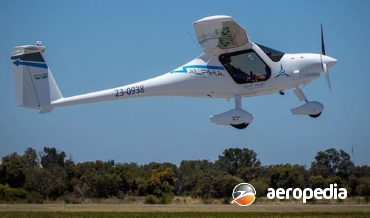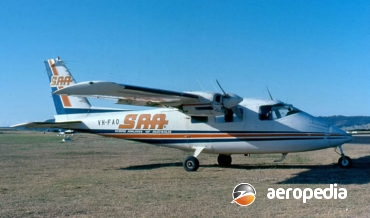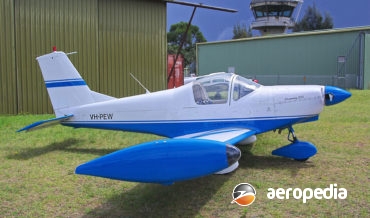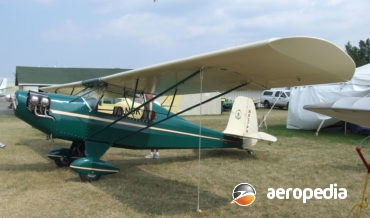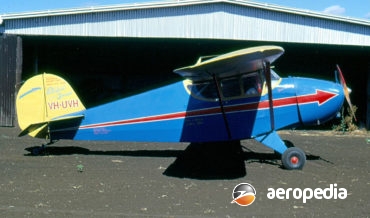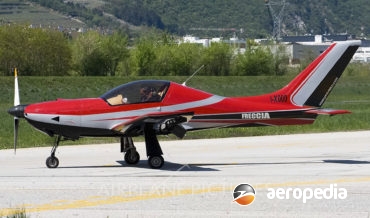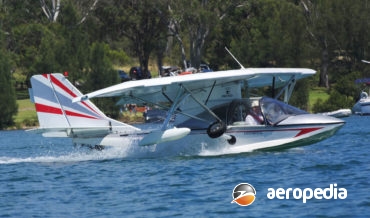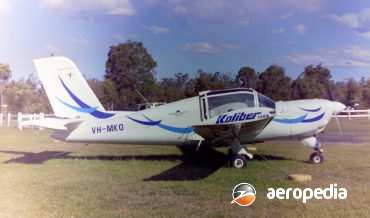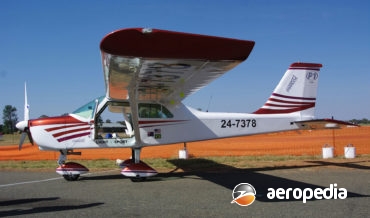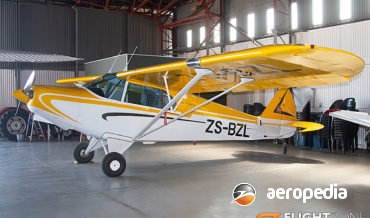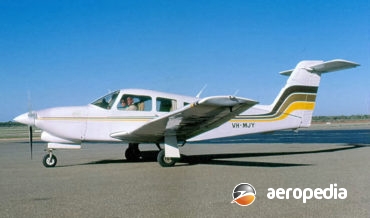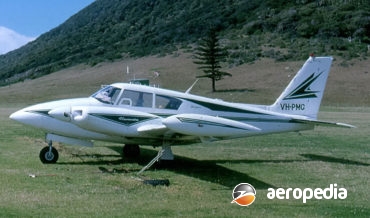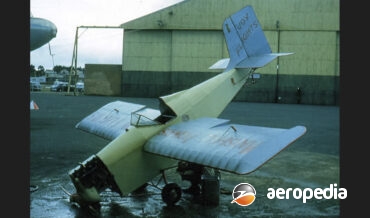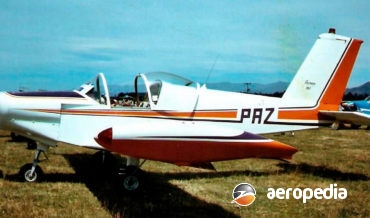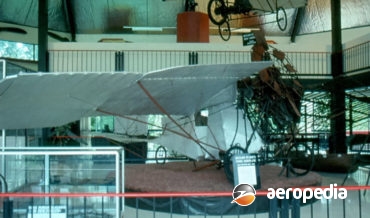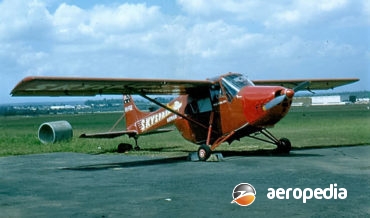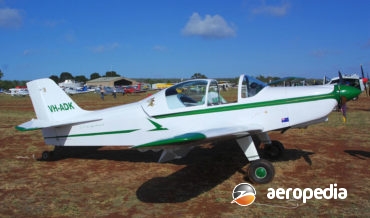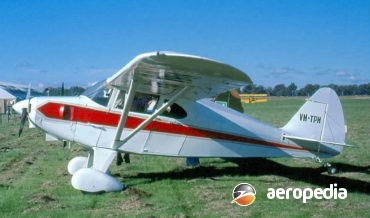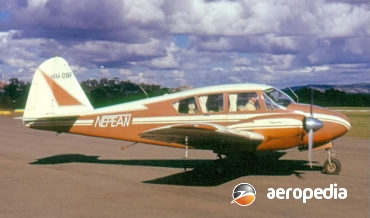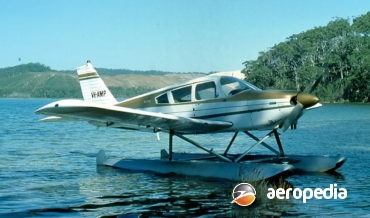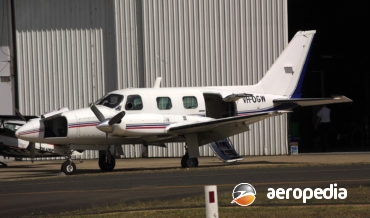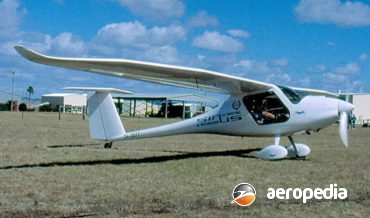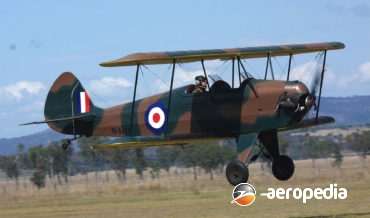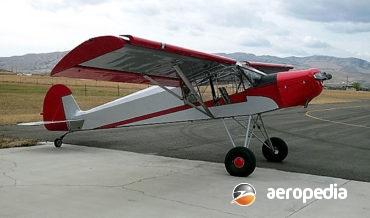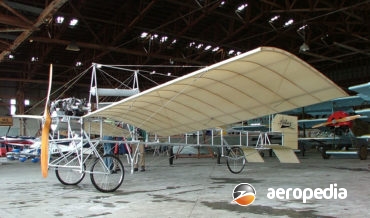All Contents
Contents
In 1968 the Cherokee C variant joined the Cherokee range. Similar to the previous 150 and 160 models, this version added two more aircraft to the series: the PA-28-180 with a 134-kw (180-hp) Lycoming O-360-A3A engine, and the PA-28-235 with a 175-kw (235-hp) Lycoming O-540-B4B5 six-cylinder engine.
David C. Eyre
- May 8, 2019
The Malibu was introduced to the range of single-engine aircraft produced by the Piper company in August 1982 as a competitor for the very successful Cessna P210 Centurion series which, up to that time, was the only pressurised single-engine cabin monoplane available on the market.
David C. Eyre
- May 8, 2019
The Alpha Electro is one of the first of a new generation of light training aircraft powered by electric motors and has been developed by Pipistrel, which is based in Slovenia’s Vipava Valley.
David C. Eyre
- May 8, 2019
The P-68 series of light transports was designed by Professor Luigi Pascale and placed in production in Italy by Partenavia in 1972. The prototype (I-TWIN) was flown on 25 May 1970, and this was followed by ten pre-production aircraft, these having a slightly shorter fuselage than the production aircraft, the
David C. Eyre
- May 8, 2019
The prototype of the Pazmany series of aircraft, the PL-1 Laminar, was flown for the first time on 23 March 1962.
David C. Eyre
- May 8, 2019
The Pegasus Aircar was designed by Mr Raymond Tolhurst of Pegasus Aerocars Design Australia Pty Ltd, and built by his company, Composite Engineering at Camden, NSW in the 1990s as an all-composite light aircraft seating two powered by a fuel-injected turbocharged Mazda rotary engine from an RX-7 motor vehicle driving
David C. Eyre
- May 8, 2019
The Piper PA-44 Seminole was designed in 1974 as a twin-engine training aircraft for pilots who had previously flown only single-engine aircraft, basically being a replacement for the Twin Comanche
David C. Eyre
- May 8, 2019
The Pober Pixie was a single-seat light parasol wing sporting aircraft, the design of which began in January 1974, the prototype making its first flight some six months later.
David C. Eyre
- May 8, 2019
The Porterfield 35-70 series of aircraft was placed in production by the Porterfield Aircraft Corporation in the USA in April 1935.
David C. Eyre
- May 8, 2019
The Freccia is one of a series of light aircraft designed and developed in Italy by Pro Mecc of Corigliano d’Otranto, being first shown to the aviation world at the Aero Show held in Friedrichshafen in 2011 It is supplied as a complete ready-to-fly aircraft and has been popular on
David C. Eyre
- May 8, 2019
The SeaRey is produced in kit form by progressive Aerodyne Inc of Orlando, Florida.
David C. Eyre
- May 8, 2019
The P-1 is a light sporting aircraft which can be built in the Experimental aircraft category or as a Light Sports aircraft which is manufactured in Brazil by Paradise Industria Aeronautica Ltd.
David C. Eyre
- May 8, 2019
The Proell O.1 was built by Proell Pty Ltd of Mannering Park, NSW and it was placed on the Australian Civil Aircraft Registered as VH-DSG (c/n 01) on 25 September 2000.
David C. Eyre
- May 8, 2019
Developed from the Piper Apache, and using many common components, the prototype of the Aztec series was flown for the first time in 1959.
David C. Eyre
- May 8, 2019
In the late 1940s Piper Aircraft Corp at Lock Haven, Pennsylvania was looking at producing a four-seat high-wing monoplane along the lines of the PA-12 Super Cruiser and it became known as the PA-14 Family Cruiser, this being achieved by widening the fuselage by 10.16 cm (4-in) and it was
David C. Eyre
- May 8, 2019
The Wilga (ie Thrush) was designed and built in Poland by Polskie Zaklady Lothicze (PZL) as a light general purpose utility aircraft and the prototype, known as the Wilga I (SP-PAZ), fitted with an indigenous 145-kw (195-hp) Narkiewicz WN-6B engine, flew for the first time on 24 April 1962.
David C. Eyre
- May 8, 2019
The Cherokee Arrow, which was added to the Cherokee range of light touring aircraft in June 1967, was virtually a retractable-undercarriage version of the fixed-undercarriage Cherokee.
David C. Eyre
- May 8, 2019
The Airtrainer series was developed by AESL from the Victa Aircruiser, production proceeding for some years, and the type is still in limited production.
David C. Eyre
- May 8, 2019
The Twin Comanche series was designed to fill a market need for a small economical multi-engined machine which would provide day, night and all-weather utility, geared to small airports and short fields.
David C. Eyre
- May 8, 2019
The PAC 750 series, as noted elsewhere was developed from the Cresco agricultural series of aircraft, which itself was developed from the Fletcher FU-24 series.
David C. Eyre
- May 8, 2019
The Parnall Penguin, also known as the Marshall Penguin, was designed and built by well known Australian aviation identity, the late Sidney Marshall, in the late 1950s.
David C. Eyre
- May 8, 2019
The Pazmany PL-1, known as the Laminar for its laminar flow wing, was designed by Ladislao Pazmany for the home-built aircraft market, the prototype flying for the first time on 23 March 1962.
David C. Eyre
- May 8, 2019
Richard Pearse was one of New Zealands pioneering aviators, designing and building aircraft on his property at Waitohi on the South Island
David C. Eyre
- May 8, 2019
On 21 December 1955 the prototype Percival EP-9 was flown for the first time by the aircraft’s designer, and founder of the company, Mr Edgar W Percival, an Australian-born designer and builder of several very successful aircraft.
David C. Eyre
- May 8, 2019
Designed in France by M Claude Piel, the prototype of the Emeraude (Emerald) series, known as the CP-30, was flown for the first time in 1952 powered by a 48-kw (65-hp) Continental engine.
David C. Eyre
- May 8, 2019
The Piper J-2 Cub first appeared in 1936 as a simple two-seat in tandem, training monoplane designed by the brothers C Gilbert and Gordon Taylor
David C. Eyre
- May 8, 2019
The Piper PA-20 Pacer, introduced in 1949, was a development of the PA-16 Clipper, which was in turn a development of the PA-15 Vagabond. The PA-16 was fitted with a 86-kw (115-hp) Lycoming four-cylinder engine.
David C. Eyre
- May 8, 2019
The Diamante was one of a series of light aircraft designed by Claude Piel in France in the 1950s.
David C. Eyre
- May 8, 2019
Known initially as the Piper Twin Stinson, the prototype of the PA-23 Apache series was flown for the first time on 2 March 1952.
David C. Eyre
- May 8, 2019
When the Cherokee was released, it was the first completely new model from the Piper stable for some time, and it represented a major change in design philosophy for the company.
David C. Eyre
- May 8, 2019
The Mojave was designed by Piper to carry a crew of two with dual controls, and five passengers in the main cabin.
David C. Eyre
- May 8, 2019
The Seneca was developed from the Piper Cherokee Six series, basically being a twin-engine version with the fuselage of the Cherokee Six using the Cherokee Six’s wings, horizontal tail and fuselage, standard single and optional double rear loading doors and single front door, with a new wing centre section so
David C. Eyre
- May 8, 2019
In 2009 Piper Aircraft was taken over by the Brunei Government and at this time Piper announced it would be producing a new training aircraft known as the Pipersport, this aircraft to be a derivative of the Czech Aircraft SportCruiser which is produced in the Czech Republic.
David C. Eyre
- May 8, 2019
The Sinus is one of a series of motor-gliders produced by Pipistrel in Slovenia and which has been available as a complete aircraft for some years, with over 300 examples of the series being delivered, and which in recent years has been available in kit form for the amateur builder.
David C. Eyre
- May 8, 2019
The Kiebitz B was designed as a light touring sporting biplane in Germany by Mr Michael Platzer at Guxhagen in Germany and is available to amateur builders in kit form.
David C. Eyre
- May 8, 2019
The PB-1 is a single-seat ultralight aircraft produced by PoorBoy Aviation of Minot, North Dakota and has been available to the market for some years in three variants, the PB-U, the PB-1 and the PB-H and is aimed at the market for a simple design with a simple construction technique.
David C. Eyre
- May 8, 2019
The STOL King was designed and produced by Preceptor Aircraft based at /Rutherfordton in North Carolina as an amateur-built light aircraft to be available as a plans or it.
David C. Eyre
- May 8, 2019
Herbert John Pither [1871 to 1934] was born in Reigate, Surrey, in the United Kingdom and was the second eldest of 12 children of John and Lydia Pither, who emigrated to Canterbury on the south island of New Zealand on board the vessel Crusader in 1875
David C. Eyre
- May 8, 2019
The Poliwagen was a light sporting aircraft designed for amateur construction of composite structure. The first of three prototypes made its initial flight in 1977.
David C. Eyre
- May 8, 2019
Recent Comments
Archives
Categories
- No categories
Categories
- No categories
Latest Posts
Newsletter



